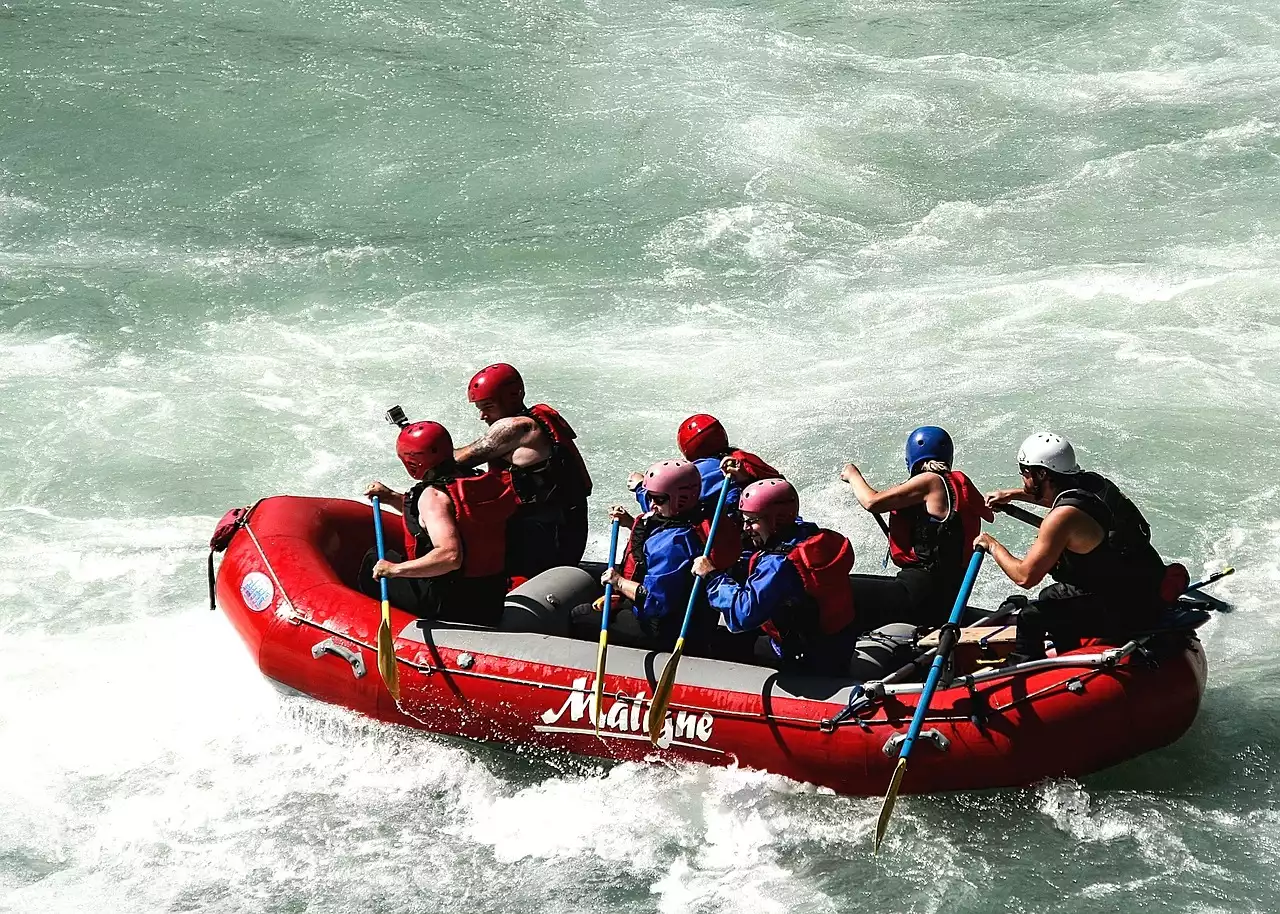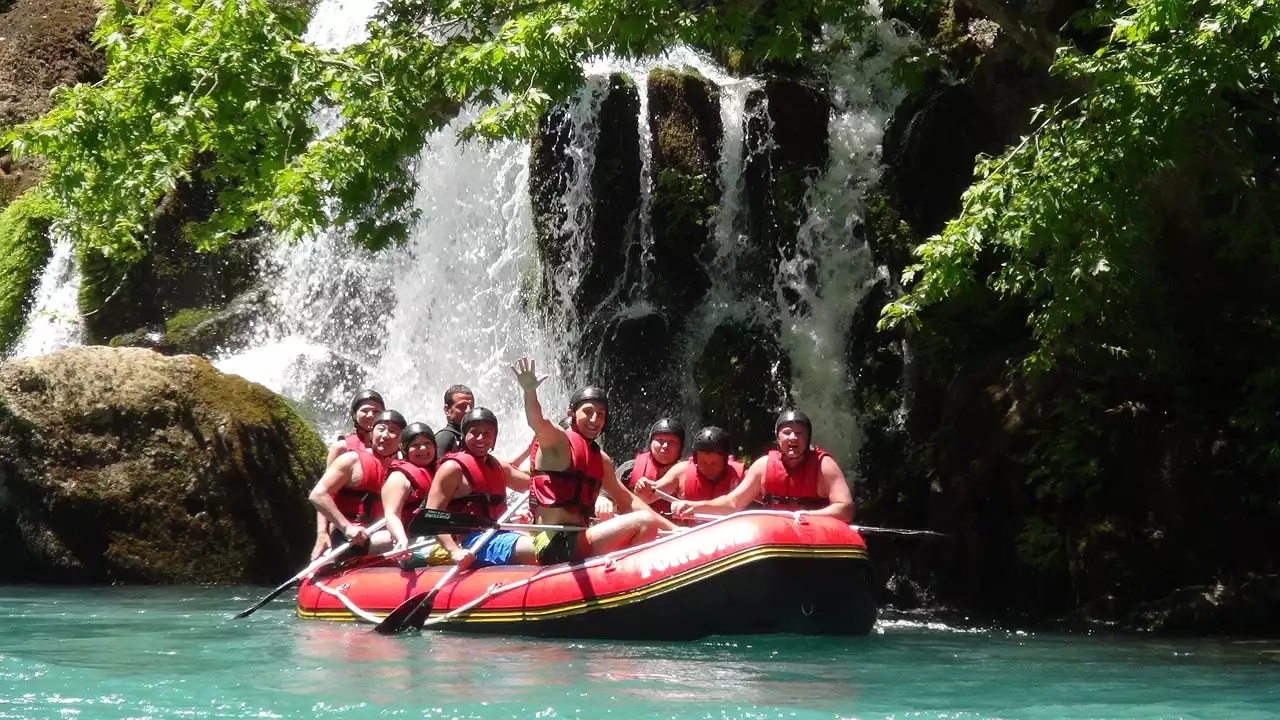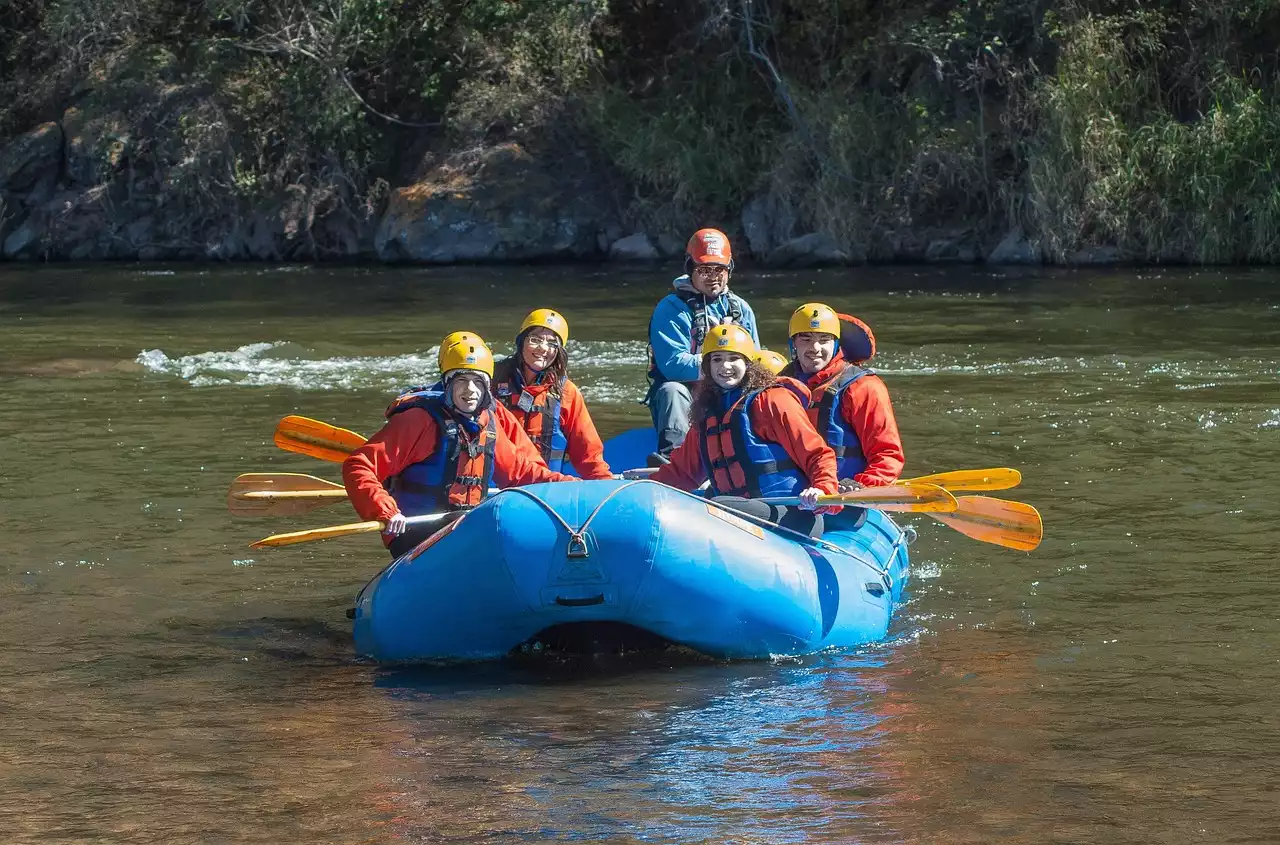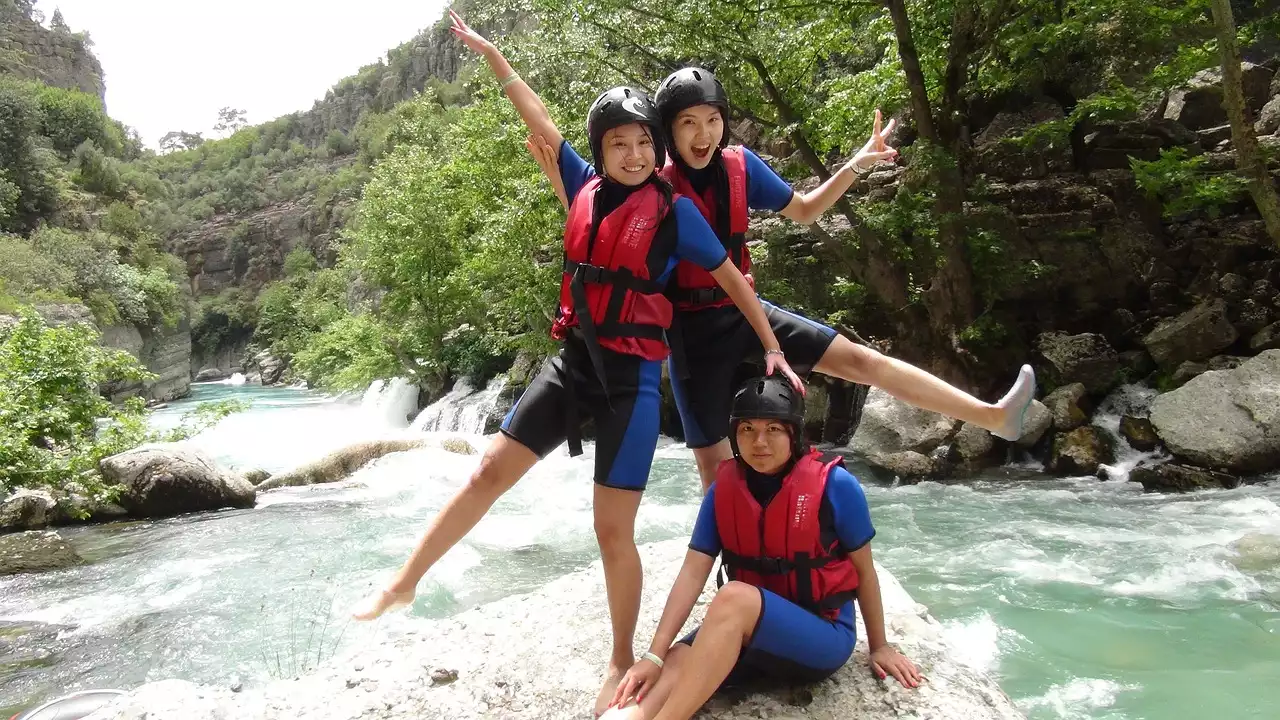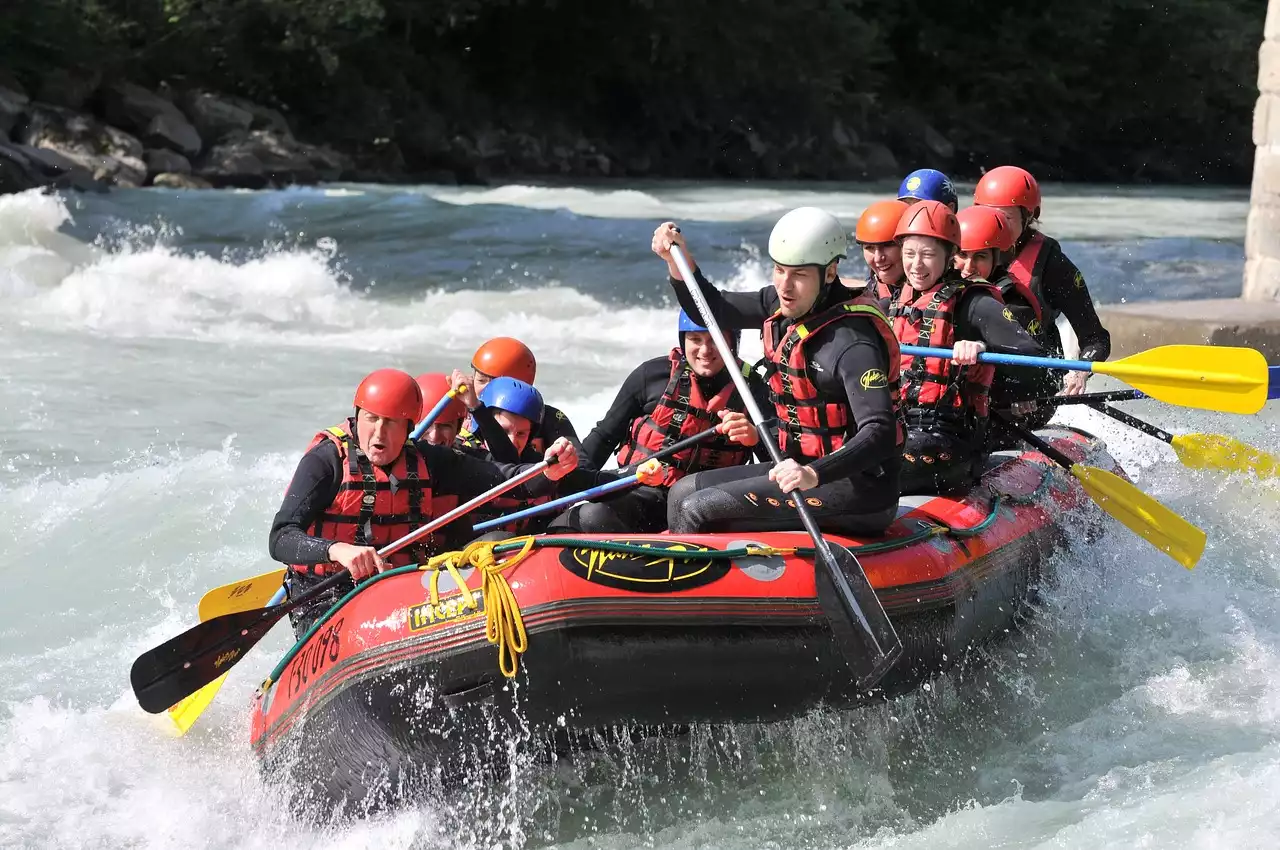The equipment needed for rafting
Before you start paddling, it's important to have the right equipment. Here are the essential items you'll need for a successful rafting trip:
Raft
The first thing you'll need is a raft. There are several types of rafts available, including inflatable rafts, hard-shell rafts, and self-bailing rafts. Inflatable rafts are the most common type and are easy to transport and store. Hard-shell rafts are more durable and can handle more extreme conditions, but they are heavier and more difficult to transport. Self-bailing rafts are a hybrid of the two and are great for beginners.
Paddles
Paddles are another essential item you'll need for rafting. They come in different lengths and materials, so it's important to choose the right paddle for your needs. Fiberglass and carbon fiber paddles are lighter and more durable, while aluminum paddles are more affordable.
Personal Flotation Device (PFD)
A personal flotation device, or PFD, is a life jacket that is essential for keeping you safe in the water. Make sure to choose a PFD that fits well and is comfortable to wear. It's also important to choose a PFD that is approved by the US Coast Guard.
Helmet
A helmet is another essential item for rafting. It will protect your head from rocks and other hazards in the water. Make sure to choose a helmet that fits well and is comfortable to wear.
Other Gear
Other gear you may need includes wetsuits, drysuits, and splash jackets. These items will help keep you warm and dry in the water. You may also need a throw bag, which is a rope that can be used to rescue someone in the water.
Top 5 Pieces of Paddling Gear | The Essential Kayak and Canoe Gear
Safety guidelines for rafting
Rafting can be a fun and exhilarating experience, but it's important to take safety seriously. Here are some essential safety guidelines to follow:
Choose a reputable outfitter
Make sure to choose a reputable outfitter for your rafting trip. They will provide you with the necessary safety gear and equipment and will have experienced guides to lead you through the rapids.
Wear a PFD
Always wear a PFD when rafting. It will keep you afloat in the water and can save your life in an emergency.
Listen to your guide
Your guide is there to keep you safe and will give you instructions on how to navigate the rapids. Listen carefully to their instructions and follow them closely.
Know your limits
Be honest with yourself about your abilities and don't take risks that you're not comfortable with. If you're a beginner, start with an easier trip and work your way up to more challenging rapids.
Be aware of hazards
Always be aware of hazards in the water, such as rocks and trees. Avoid them whenever possible and be prepared to navigate around them when necessary.
What to know before going rafting? | Rafting Safety Tips (India Now)
Different types of rapids
Not all rapids are created equal. There are six classes of rapids, ranging from Class I (easy) to Class VI (extreme). Here's a breakdown of the different classes:
Class I
Class I rapids are the easiest and are suitable for beginners. They are characterized by small waves and easy-to-navigate channels.
Class II
Class II rapids are a bit more challenging and are characterized by larger waves and more obstacles to navigate around.
Class III
Class III rapids are even more challenging and require more skill to navigate. They are characterized by large waves and obstacles that require precise maneuvering.
Class IV
Class IV rapids are very difficult and require advanced paddling skills. They are characterized by large waves, powerful currents, and obstacles that require expert maneuvering.
Class V
Class V rapids are extremely difficult and are only suitable for experienced paddlers. They are characterized by turbulent water, large waves, and obstacles that require expert maneuvering.
Class VI
Class VI rapids are considered unrunnable and are extremely dangerous. They should be avoided at all costs.
Whitewater Rafting: Rapid Classes Demystified
How to read rapids
Reading rapids is an essential skill for rafting. Here are some tips to help you read rapids:
Look for the V
When approaching rapids, look for the V-shaped pattern in the water. This indicates the main channel and will help you navigate the rapids.
Watch the water
Watch the water as you approach the rapids. Look for changes in the water, such as waves and eddies, that can indicate obstacles or hazards.
Listen to the sound
Listen to the sound of the water as you approach the rapids. The sound can help you identify the location of obstacles and hazards.
Follow the leader
If you're rafting with a guide, follow their lead. They will know the best route through the rapids and will give you instructions on how to navigate them.
Reading the River: how to spot those pesky rocks
Paddling techniques for rafting
Paddling is an essential skill for rafting. Here are some basic techniques to help you paddle effectively:
Forward stroke
The forward stroke is the most basic paddling technique. It involves dipping the paddle into the water and pulling it back towards your hip.
Backward stroke
The backward stroke is used to slow down or stop the raft. It involves pushing the paddle away from your hip and pulling it back towards the front of the raft.
Sweep stroke
The sweep stroke is used to turn the raft. It involves sweeping the paddle in a wide arc away from the side of the raft.
High brace
The high brace is used to stabilize the raft in rough water. It involves placing the paddle flat on the water's surface and pressing down to prevent the raft from flipping.
Rafting 101: How To Paddle In A Raft
Communication in rafting
Communication is essential for a successful rafting trip. Here are some basic communication techniques to help you communicate effectively:
Commands
There are several basic commands that are used in rafting, including "forward," "backward," "stop," and "left" and "right." Make sure to listen carefully to your guide's instructions and follow them closely.
Hand signals
Hand signals are used to communicate when it's difficult to hear over the sound of the water. For example, if you need to stop the raft, you can raise your hand in the air.
Verbal cues
Verbal cues are also used to communicate when it's difficult to hear over the sound of the water. For example, you can shout "watch out" if you see an obstacle in the water.
White Water Rafting: Communication is Key (STUDENT FILM DOCUMENTARY)
What to wear for rafting
What you wear for rafting will depend on the weather and water conditions. Here are some basic guidelines to follow:
Warm weather
If the weather is warm, you can wear shorts and a t-shirt or a swimsuit. Make sure to wear shoes that will stay on your feet, such as water shoes or sandals with a heel strap.
Cold weather
If the weather is cold, you'll need to wear a wetsuit or drysuit to stay warm. You can also wear splash jackets and neoprene gloves and booties to keep your hands and feet warm.
Sun protection
Regardless of the weather, it's important to wear sunscreen and a hat to protect yourself from the sun.
What to Wear Under Your Drysuit for Rafting | Ep. 190
Choosing the right rafting trip
When choosing a rafting trip, it's important to consider your skill level and experience. Here are some factors to consider:
Skill level
Make sure to choose a trip that matches your skill level. If you're a beginner, start with an easier trip and work your way up to more challenging rapids.
Duration
Consider how long you want the trip to be. Some trips are just a few hours, while others can be several days.
Location
Consider the location of the trip and whether it's convenient for you to travel there. You can also consider the scenery and wildlife in the area.
Cost
Consider the cost of the trip and whether it fits within your budget. Keep in mind that some trips may require additional expenses, such as lodging and transportation.
Rafting the Lower Yough - Choosing a Trip Format
Next steps
Now that you have a solid understanding of the basics of rafting, it's time to start planning your trip! Remember to choose a reputable outfitter, wear the right equipment, and follow the essential safety guidelines. With the right preparation and skills, you'll be able to navigate the rapids with confidence and excitement. Happy paddling!
